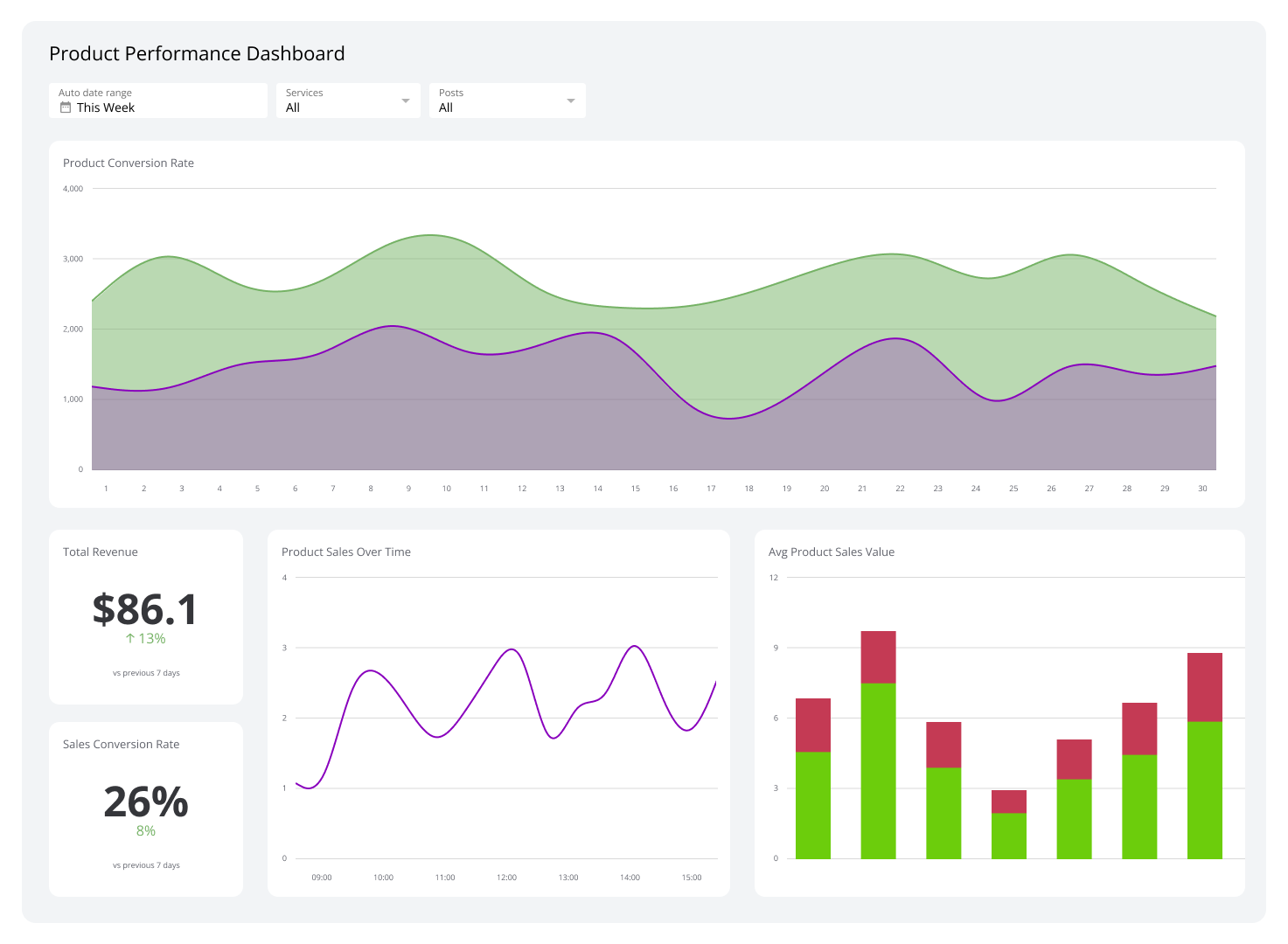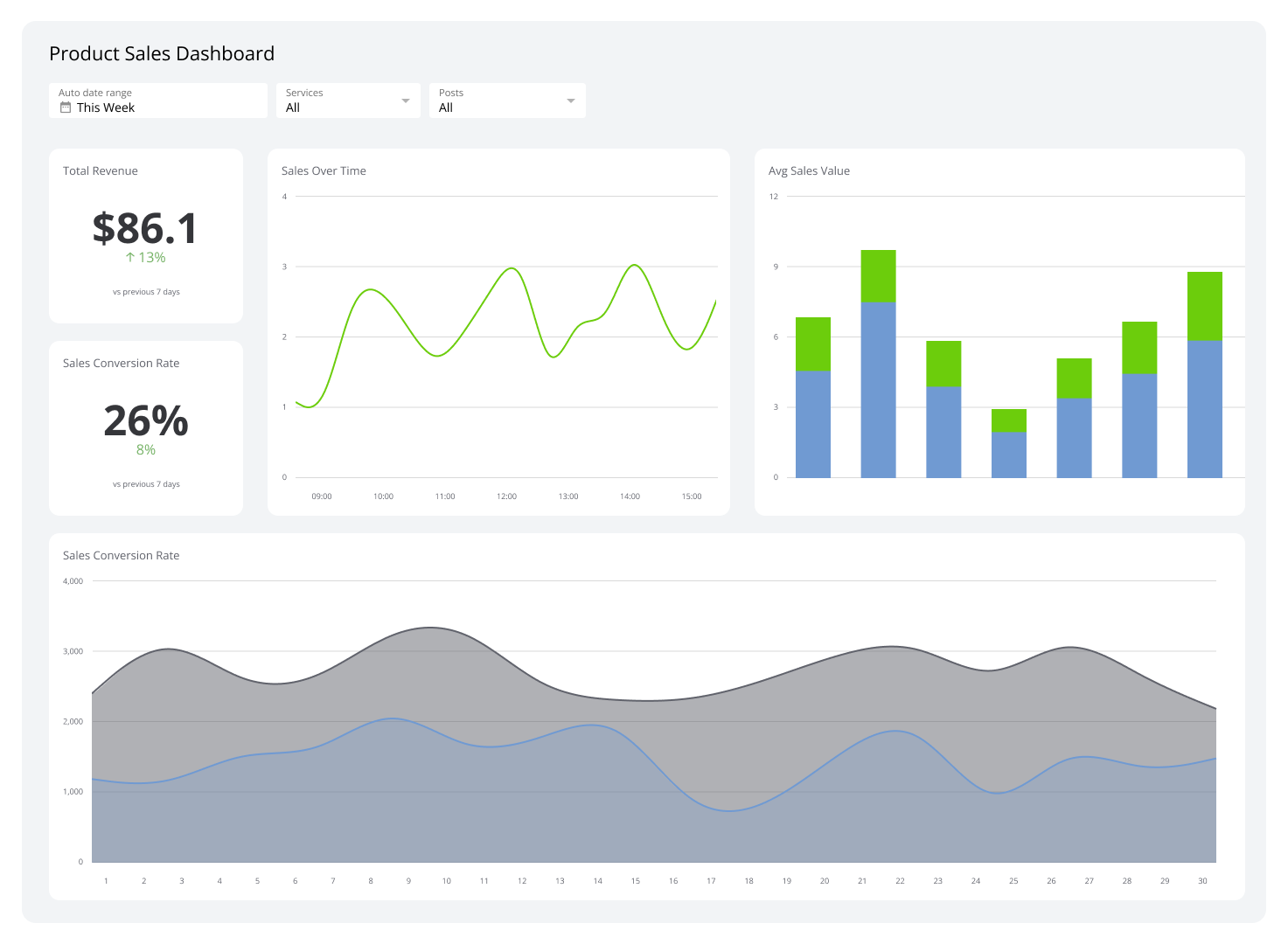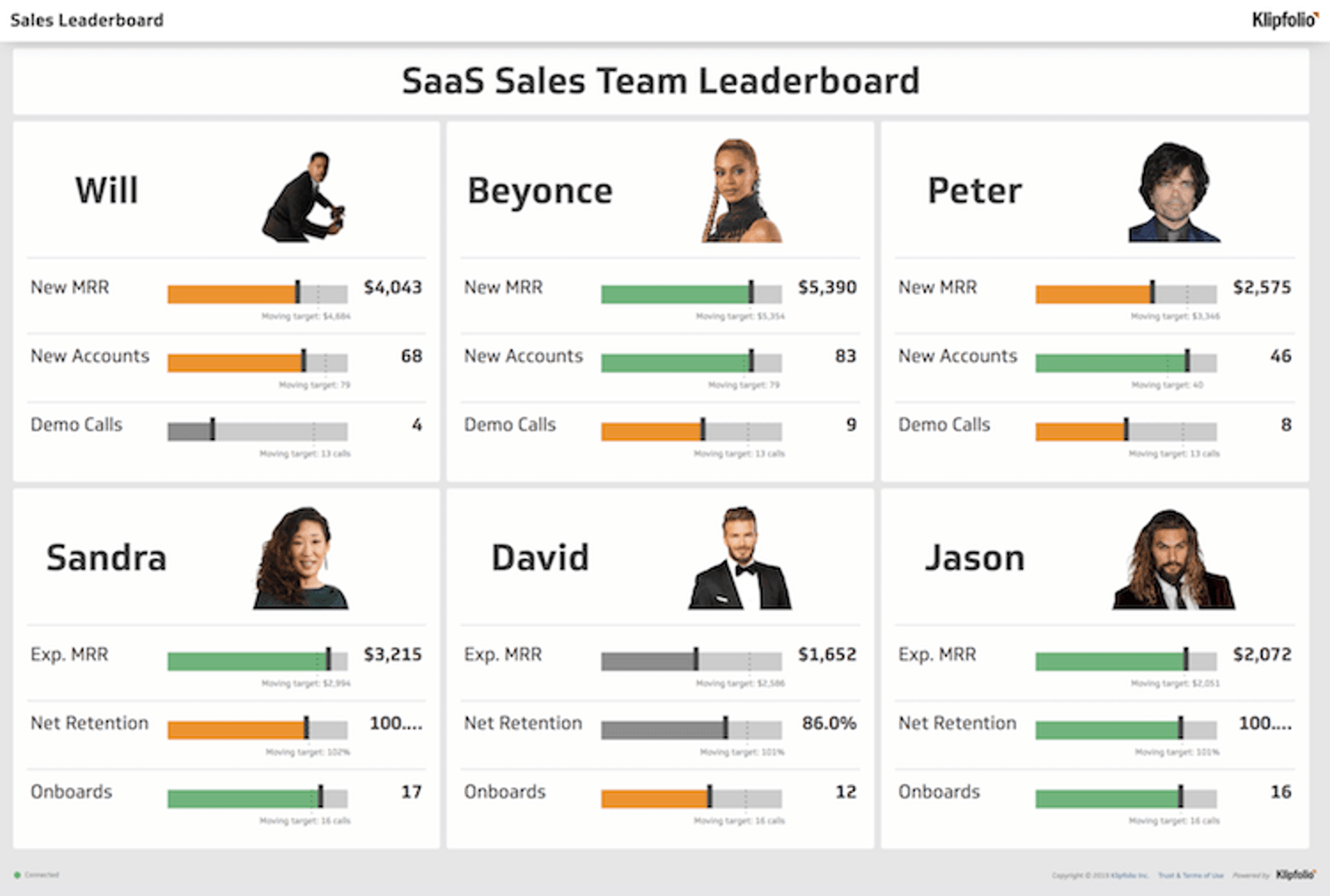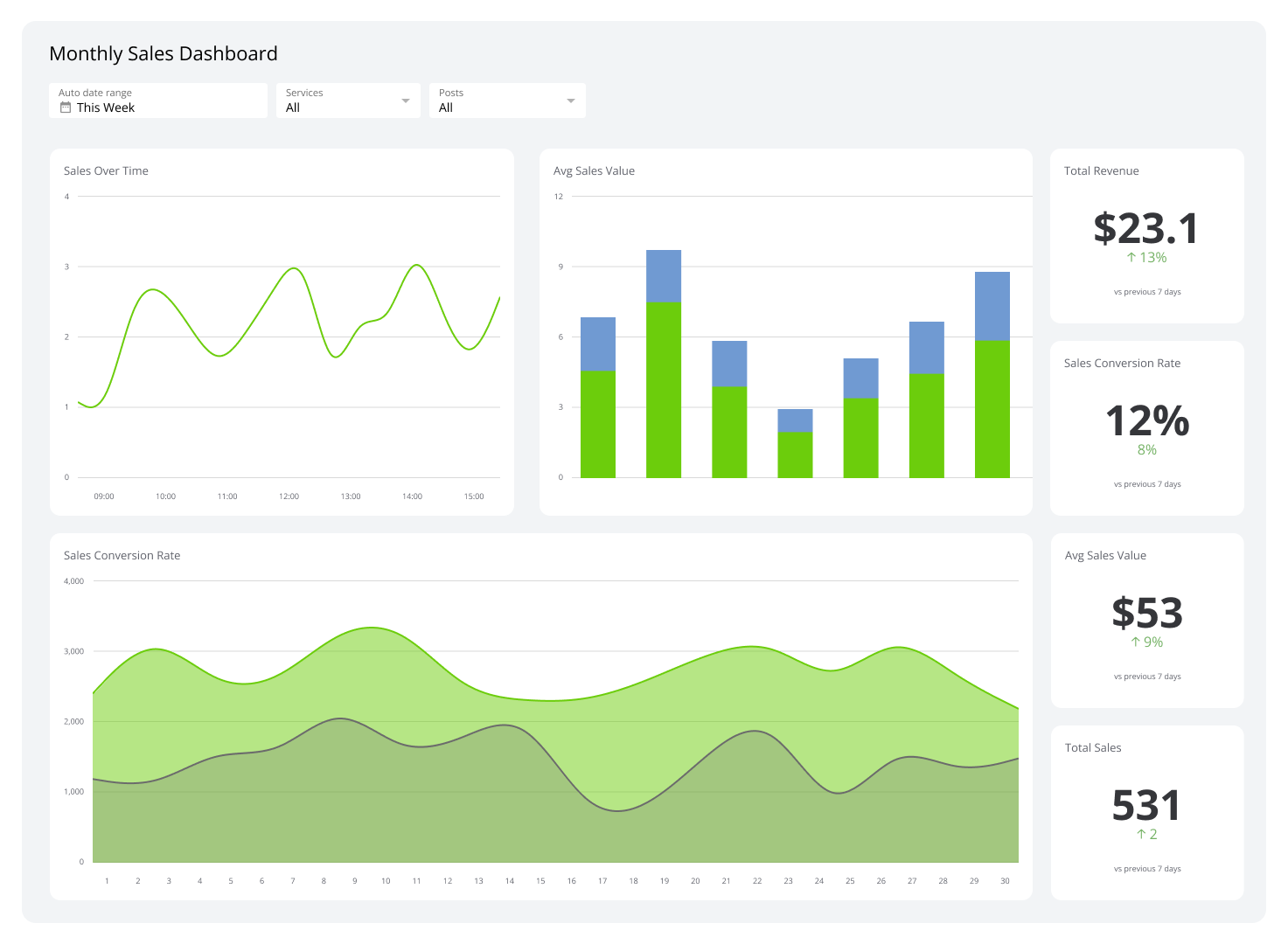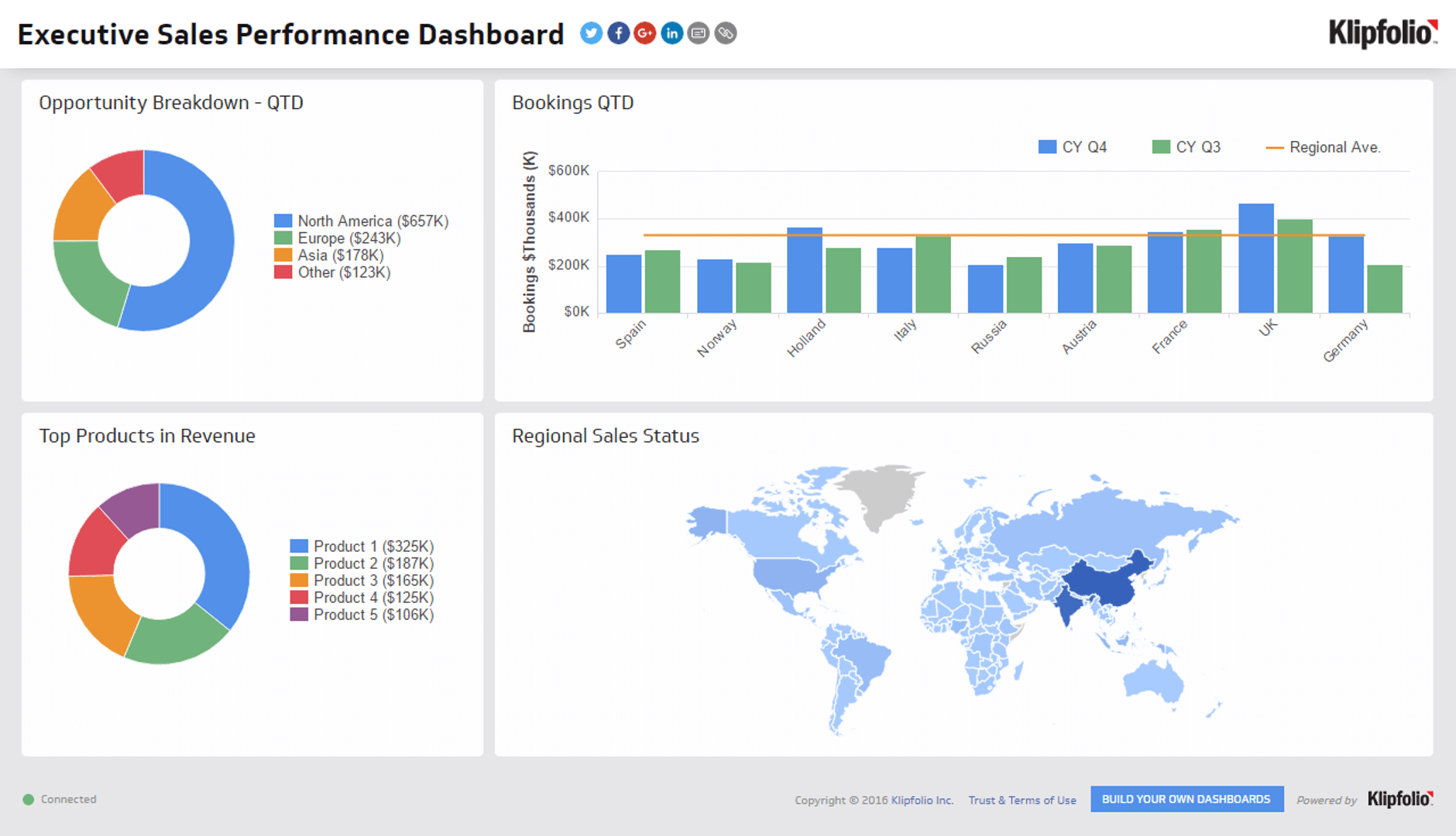Sales Dashboard Examples
Sales dashboards show you how effectively your business generates revenue. Study KPIs to grow accounts, retain customers, and identify sales opportunities.
What is a Sales Dashboard?
Sales dashboard is a tool designed to provide sales teams with a comprehensive, real-time view of their performance by visually displaying key sales metrics and data.
The dashboard provides an at-a-glance view of your sales team's performance. Sales teams operate in a fast-paced, target-oriented environment. Data-driven sales managers and reps closely monitor their individual and team performance on a daily basis so they can adjust or improve their strategies in real-time.
Sales Examples Dashboard Examples
View all dashboard examplesSimplify sales data acquisition
A sales dashboard delivers sales metrics through visualizations like interactive charts and graphs. It simplifies the sales data acquisition process and provides the insights needed to boost revenue, improve customer retention, capitalize on opportunities, and see changes or trends in the marketplace.
Klipolifo’s customizable sales dashboards deliver accurate, real-time data. Try it for free today and better understand your sales efforts.


